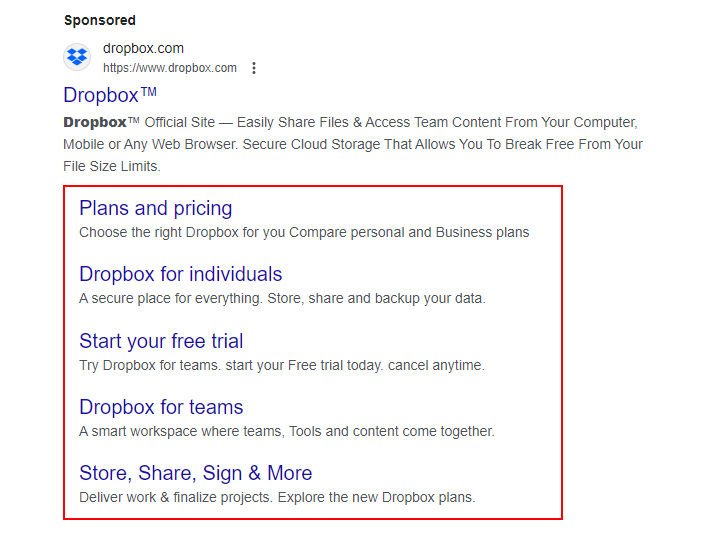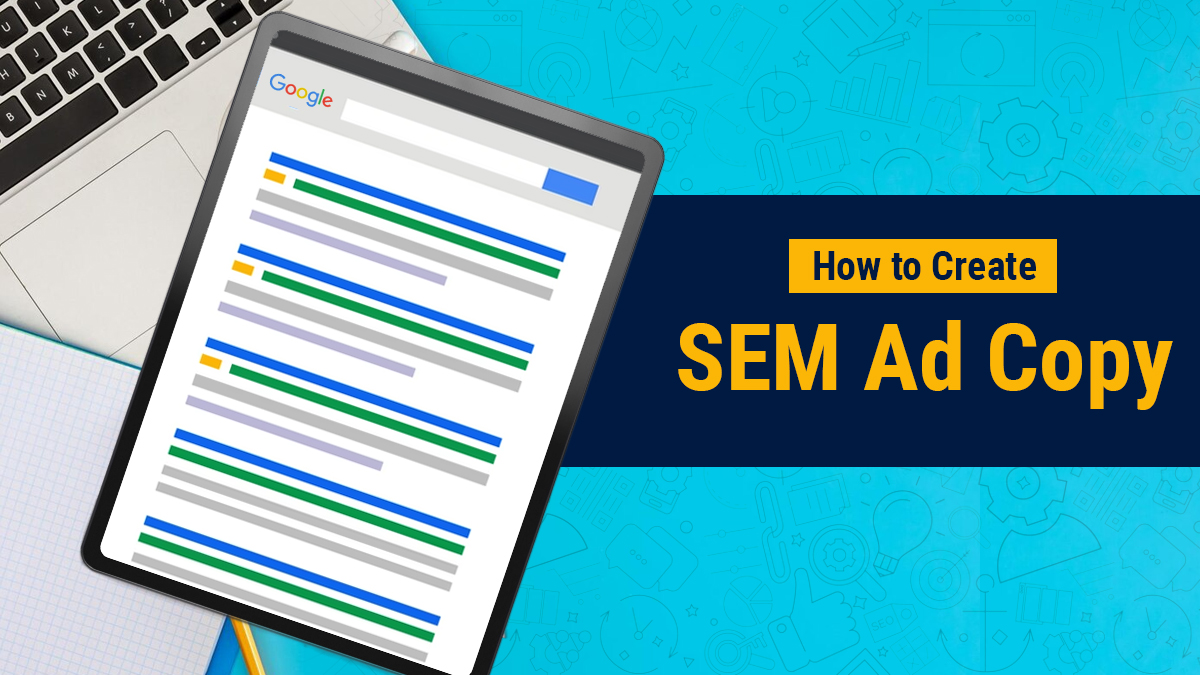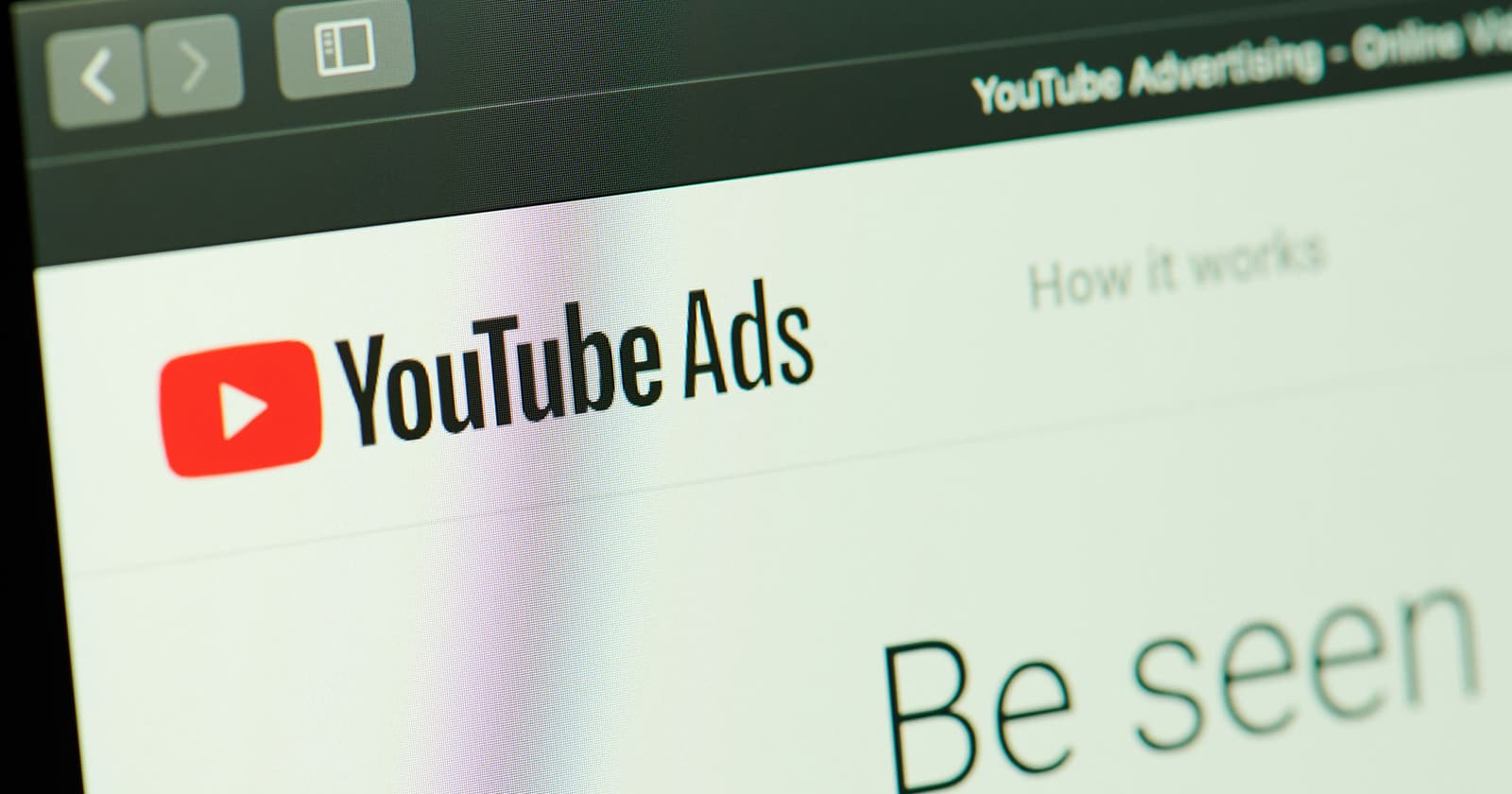Welcome to our guide on mastering the art to create SEM ad copy! In the realm of search engine marketing (SEM), success isn’t just about reaching the right audience—it’s about captivating them with compelling messages that drive action.
In this comprehensive resource, we’ll delve into the intricacies to create SEM ad copy that not only resonates with your target audience but also propels your campaigns to new heights of effectiveness. Explore expert strategies and insights designed to help you craft ad copy that captivates, engages, and ultimately drives outstanding results.
So, let’s dive in and unlock the secrets to create SEM ad copy that significantly boosts your click-through rates and maximizes your campaign’s success.
What Is SEM Ad Copy?
SEM ad copy operates much like a digital billboard, serving as a platform to engage and captivate potential customers, guiding them towards your website. The language chosen for your ad must concisely highlight the value proposition of your brand, product, or service to its audience.
The primary objective of your SEM ad copy is to craft compelling messaging that encourages individuals to click on your ad and, ultimately, convert into customers. PPC experts possess a nuanced understanding of market trends and consumer psychology, enabling them to create SEM ad copy that effectively attracts and engages the target audience.
Let’s now explore the intricacies of crafting SEM ad copy that captures attention and efficiently drives conversions.
5 Crucial Elements To Generate SEM Ad Copy
Headline
Understanding all five main elements of an SEM ad is crucial for optimizing your ad copy’s effectiveness. The headline, in particular, plays a vital role. It’s not merely a catchy phrase; instead, it serves as the most strategic part of your ad copy.
Within a limited character count, your headline needs to include your primary keyword while also piquing the viewer’s interest. Experienced advertisers skillfully utilize this space to showcase their brand’s unique value proposition and stand out from competitors.

For example, consider Raw & Fresh’s ad copy: “Pet Food, Bones & Treats – Home Delivered | Raw & Fresh.” This headline is effective for several reasons. Firstly, it incorporates relevant keywords like “Pet Food,” “Bones,” “Treats,” “Home Delivered,” and “Raw & Fresh,” ensuring alignment with potential user searches related to pet care.
Additionally, it highlights convenience, quality, and variety, immediately conveying the benefits of choosing Raw & Fresh to potential customers. Through careful crafting of their headline, Raw & Fresh effectively captures the attention of their target audience and communicates their brand’s value proposition concisely yet powerfully.
Description
Within your advertisement description, you can elaborate on the initial promise introduced in the headline. This space allows for a deeper exploration of what distinguishes your product or service and why potential customers should consider engaging with it.

Experienced SEM (Search Engine Marketing) marketers understand the importance of striking a balance between highlighting the benefits of their offerings and crafting a compelling call-to-action (CTA). It’s not simply about listing features but rather about explaining how your product or service can address the needs and desires of your target audience.
Within this space, it’s crucial to articulate your product’s tangible benefits, offering practical solutions to your audience’s problems. Additionally, providing insight into the value users can derive from engaging with your ad can significantly enhance its effectiveness. This is also where you can emphasize your unique selling proposition (USP), highlighting what sets you apart from competitors.
A notable example of this approach is in Dropbox’s ad copy: “With Dropbox™, Bring Your Files & Cloud Content With the Tools Your Team Wants To Use. Easily Access Your Team’s Work From Your Computer, Mobile Device, or Any Web Browser. Back up any file. Automatic backups. Stress-free file sharing. Access your info anytime.”
This copy effectively communicates the core benefits of Dropbox: its accessibility and ease of use. By highlighting features like easy access across multiple devices and stress-free file sharing, Dropbox presents a compelling case for the value it offers to potential users. Furthermore, including a clear and compelling call-to-action (“Access your info anytime.”) prompts immediate action from users, increasing the likelihood of engagement.
It’s important to recognize that while a call-to-action (CTA) may not be a distinct section within the Google Ads framework, its significance cannot be overstated. A well-crafted CTA directs your audience towards the desired action, whether purchasing, contacting your business, or signing up for a service. By providing this clear directive, you guide users through the conversion process and leverage psychological cues to encourage them to take action.
URL
The display URL holds significance beyond its surface appearance as a technical element. It is pivotal in establishing and nurturing trust with your audience, a fundamental aspect of any successful advertising effort.

To effectively utilize the display URL, it’s imperative to align it with your users’ expectations while maintaining coherence with the content of your landing page. This alignment not only enhances the user experience but also reinforces the credibility of your ad campaign.
By crafting a display URL that reflects the essence of your brand and resonates with your target audience, you can significantly boost click-through rates (CTR) and engagement levels. This approach ensures that your advertising initiatives attract attention and encourage meaningful interactions with your brand.
Ad Extensions

Incorporating ad extensions is crucial for optimizing the space allotted on the search engine results page. By utilizing these extensions, you not only enhance the visibility of your ads but also acquire extra room to communicate information about your products or services effectively. This expanded space allows you to offer users more comprehensive details, thereby increasing the likelihood of positively influencing their decision-making process.
Also Read: Understanding the Differences: Google Display Network vs Search Network
Ad Formatting
Ad formatting possesses substantial influence, primarily through its visual elements. By employing capitalization and punctuation, one can create compelling text that aligns with Google’s guidelines by employing capitalization and punctuation.
There are opportunities to enhance ad readability on social media platforms like Facebook and Instagram. Utilizing bold text for keywords and incorporating line breaks strategically can notably improve the ad’s presentation, particularly when viewed on mobile devices.
How To Test New SEM Ad Copy Strategically For Success
To ensure the effectiveness of your SEM ad copy, it’s imperative to test its efficiency and refine your campaigns accordingly consistently.
Let’s explore a comprehensive guide on crafting SEM ad copy and rigorously testing new variations to maximize the success of your campaigns.
Begin With Thorough Keyword Research
To initiate your keyword research effectively, it’s essential first to understand your target users’ intent. Take the time to thoroughly grasp what your audience is looking for and what their goals and aspirations are. This understanding forms the foundation for building a robust list of keywords that resonate with your audience.
As you compile your list of keywords, consider not only the primary terms but also their synonyms and variations. Users may employ different phrases or terms to search for the same thing, so incorporating these variations can broaden your reach. Additionally, exploring long-tail keyword options can uncover specific queries with lower search volume but higher relevance to your audience.
In the process of conducting keyword research, leverage the capabilities of tools like Google Keyword Planner, SEMrush, and Ahrefs. These tools offer valuable insights into search volume, competition level, and related keywords. Furthermore, they provide invaluable data for conducting competitive analysis, enabling you to refine your keyword strategy based on the landscape of your industry or niche.
Mastering Persuasion In Ad Copy
Crafting persuasive ad copy involves tailoring it to address the audience’s pain points, desires, and needs, identified through thorough keyword and audience research. Integrate these insights seamlessly into your headline and description using the keywords uncovered during research.
Highlight the unique value proposition of your product or service, focusing on benefits rather than just features. Clearly articulate how your offering can resolve users’ problems or improve their lives, aiming to evoke an emotional response from your audience.
Compelling ad text should pique curiosity and compel users to click, avoiding mundane, generic copy. Ensuring your copy resonates with your audience is crucial for maintaining memorability across campaigns. For example, slogans like Alka-Seltzer’s “Plop, plop, fizz, fizz” and Bounty’s “the quicker picker upper” are universally recognized, leaving a lasting impression on consumers nationwide.
A/B Test Your Ad Copy
Crafting persuasive ad copy involves tailoring it to address the audience’s pain points, desires, and needs, identified through thorough keyword and audience research. Integrate these insights seamlessly into your headline and description using the keywords uncovered during research.

Highlight the unique value proposition of your product or service, focusing on benefits rather than just features. Clearly articulate how your offering can resolve users’ problems or improve their lives, aiming to evoke an emotional response from your audience.
Compelling ad text should pique curiosity and compel users to click, avoiding mundane, generic copy. Ensuring your copy resonates with your audience is crucial for maintaining memorability across campaigns. For example, slogans like Alka-Seltzer’s “Plop, plop, fizz, fizz” and Bounty’s “the quicker picker upper” are universally recognized, leaving a lasting impression on consumers nationwide.
Landing Page Alignment
Ensuring the alignment between your ad copy and the content of the landing page is crucial for maintaining messaging consistency. When a user clicks on your ad, they should land on a page that echoes and reinforces the promises and information presented in the ad copy. This coherence ensures a smooth and logical journey for the user, from ad clicks to landing pages.
Consistency between the ad and the landing page builds trust with your audience. They feel assured they will receive what they were promised, potentially resulting in higher conversion rates. Inconsistencies between the ad and the landing page can confuse or frustrate users, prompting them to leave the page without taking the desired action.
Therefore, you must meticulously craft your ad copy and landing page content to align seamlessly. This consistency not only improves user experience but also maximizes the effectiveness of your advertising efforts.
Also Read: What is Google Ad Rank and How to Improve it?
Data-driven Decisions
Regularly analyzing metrics such as click-through rates (CTR), conversion rates, and cost per click (CPC) is crucial for uncovering high-performing advertisements and understanding trends that resonate with your target audience. By delving into these metrics, you can gain insights into which ads are most effective in engaging your audience and driving desired actions.
Additionally, studying user behavior on landing pages provides valuable insights into how visitors interact with your website after clicking on an ad. By optimizing landing pages based on geographic and device preferences, you can enhance the user experience and increase the likelihood of conversion.
Furthermore, leveraging keyword performance insights allows you to refine your ad strategy and allocate resources effectively. Adjusting ad scheduling based on peak times of user activity can help maximize the visibility of your ads and improve their performance.
Lastly, analyzing competitor strategies provides valuable intelligence that can inform your own ad campaigns. By understanding what strategies are successful for your competitors, you can adapt your approach to stay competitive and capitalize on emerging trends in your industry.
Competitive Copy Analysis
Review your competitors’ SEM ad copy extensively to grasp their messaging strategies. Analyze their standout factors and identify methods to distinguish your brand. Explore potential market gaps or areas for enhancement that your ad copy can effectively target.
Next, develop a distinct position or value proposition that appeals to your target demographic and distinguishes your brand. This could entail spotlighting exclusive features, prioritizing top-notch customer service, or presenting an alternative viewpoint on your product or service offering.
Develop SEM Ad Copy Utilizing Proven Tactics To Drive Engagement
Keyword Insertion
This strategy entails smoothly integrating users’ exact search queries into your ad copy. This customization makes the ad more relevant to their specific needs, ultimately increasing its relevance. Aligning the user’s search query with the ad copy enhances relevancy and boosts click-through rates. Incorporating keywords directly into the ad text is essential for improving quality scores and ensuring that the ad effectively connects with the user’s query.
Urgency And Scarcity
Using phrases like “Limited Time Offer” creates a sense of urgency for potential customers, motivating them to act promptly to avoid missing out. Similarly, phrases indicating scarcity, such as “Act Now” or “Limited Availability,” evoke a fear of missing out (FOMO), prompting immediate action from viewers. These tactics capitalize on the psychological principle of scarcity, making the offer appear more desirable and urgent.
Social Proof
Incorporating elements like customer reviews, testimonials, ratings, or awards into your ad establishes credibility and trust with prospective customers. By showcasing positive experiences others have had with your product or service, social proof reassures potential customers, addressing any doubts they may have and boosting their confidence in making a purchase decision.
Benefit-Driven Language
Instead of merely listing features, focus on highlighting the benefits of your product or service. This approach resonates more effectively with your audience’s needs and desires. By showcasing how your offering solves a problem or fulfills a passion, you immediately communicate its value to users, making it more compelling and relevant to them.
CTA Clarity
A compelling Call-to-Action (CTA) guides users towards the desired action. It should be clear, actionable, and aligned with both the user’s intent and the landing page they will visit. Incorporating directive verbs like “Shop Now,” “Get Started,” or “Download” explicitly communicates the action users should take, increasing the likelihood of conversion.
The Questioning Approach
Engage users intellectually by posing a thought-provoking question in your ad copy. This stimulates curiosity and encourages users to seek answers by clicking on your ad. By framing the question to address common user concerns or tap into their interests, you pique their interest and draw them further into the ad experience.
For example, by asking “Searching for the Perfect Getaway?” in a travel ad, you appeal to the user’s desire for a memorable vacation, leading them to explore your offer further.
Practical Tips On Crafting Exceptional Ad Copy
In today’s advertising landscape, where consumers are bombarded with a plethora of messages across different platforms like Slack, email, competing ads, and text messages, capturing their attention poses a considerable challenge. To ensure that your ads stand out amidst this sea of information, carefully craft your ad copy. Here’s a breakdown of strategies to enhance the effectiveness of your ads:
- Incorporate Keywords: Strategically integrating relevant keywords into your ad copy not only boosts its visibility but also improves its quality score. This increases the likelihood of your ads appearing in relevant searches and securing higher placement on search engine results pages.
- Emphasize Unique Value Propositions (UVPs): Setting your brand apart from competitors and captivating your target audience’s interest requires highlighting your unique value propositions. Clearly articulating what distinguishes your products or services and why potential customers should choose your brand over others is crucial.
- Implement Strong Calls-to-Action (CTAs): A compelling call-to-action is vital for directing users towards the desired action, whether it’s making a purchase, subscribing to a newsletter, or visiting your website. Clearly convey the action you want the audience to take and provide a sense of urgency or incentive to prompt immediate engagement.
- Use Responsive Search Ad (RSA) Assets: Leveraging responsive search ad assets enables you to furnish Google with various ad components, such as headlines and descriptions, which it can dynamically assemble to create the most pertinent and engaging ad for each user’s search query. This optimizes the potential reach and efficacy of your advertisements on the Google Ads platform.
By implementing these strategies, you can significantly enhance the chances of your advertisements capturing the attention of your target audience and driving meaningful engagement and conversions.
Improving SEM Ad Copy
- Optimizing Copy Through A/B Testing: Employ A/B testing for even minor copy adjustments. Unbounce’s button A/B split test demonstrated a 90% increase in CTR by changing “Start your free 30-day trial” to “Start my free 30-day trial”.
- Ensure Spelling and Grammar Accuracy: Verify correct spelling and grammar. Errors decrease ad clicks by 70%. Eliminating spelling and grammatical mistakes can prevent higher costs on Google ads; anticipate a 72% increase for grammatical errors and 20% for clear spelling errors.
- Simplify Copy for Enhanced Engagement: Simplify copy to engage broader audiences; Boomerang’s study indicates a 36% higher engagement for content at a third-grade reading level.
- Incorporate Social Proof: Integrate social proof; Unbounce’s 2018 study revealed a 1% higher conversion rate for landing page ad copy featuring social proof.
- Leverage A/B Testing for Landing Pages: Employ A/B testing for landing pages; HubSpot notes that fewer than 20% of marketers currently do so, offering a strategic advantage over competitors.
Conclusion
In conclusion, the world of SEM ad copy is dynamic and offers a plethora of strategies for optimization. By skillfully crafting engaging ad copy, incorporating data-driven insights, and employing proven tactics, businesses can establish strong connections with their audience and improve campaign performance.
In the realm of SEM, every click is valuable. Mastery of ad copy intricacies demonstrates how these concise text snippets can drive significant success. By embracing the evolving landscape of SEM ad copy, businesses can navigate confidently and achieve remarkable results.
FAQs
How to Craft Effective SEM Ad Copy?
Effective SEM ad copy needs to be concise, relevant, and persuasive. It must clearly convey the value of your product or service while enticing users to click through to your website.
How to Make Your Headline Stand Out in SEM Ad Copy?
To make your headline stand out, use actionable language, include numbers or statistics, employ dynamic keyword insertion (DKI), and highlight unique selling points or offers.
What are Key Elements of Successful SEM Ad Copy?
Critical components include a compelling headline, relevant keywords, unique selling propositions (USPs), a clear call-to-action (CTA), and appropriate ad extensions (like site links or callouts).
What to Avoid in SEM Ad Copy?
Avoid misleading or exaggerated claims, irrelevant keywords, grammatical errors, and overly complex language. Your ad copy should be transparent, accurate, and directly relevant to the user’s query.



























